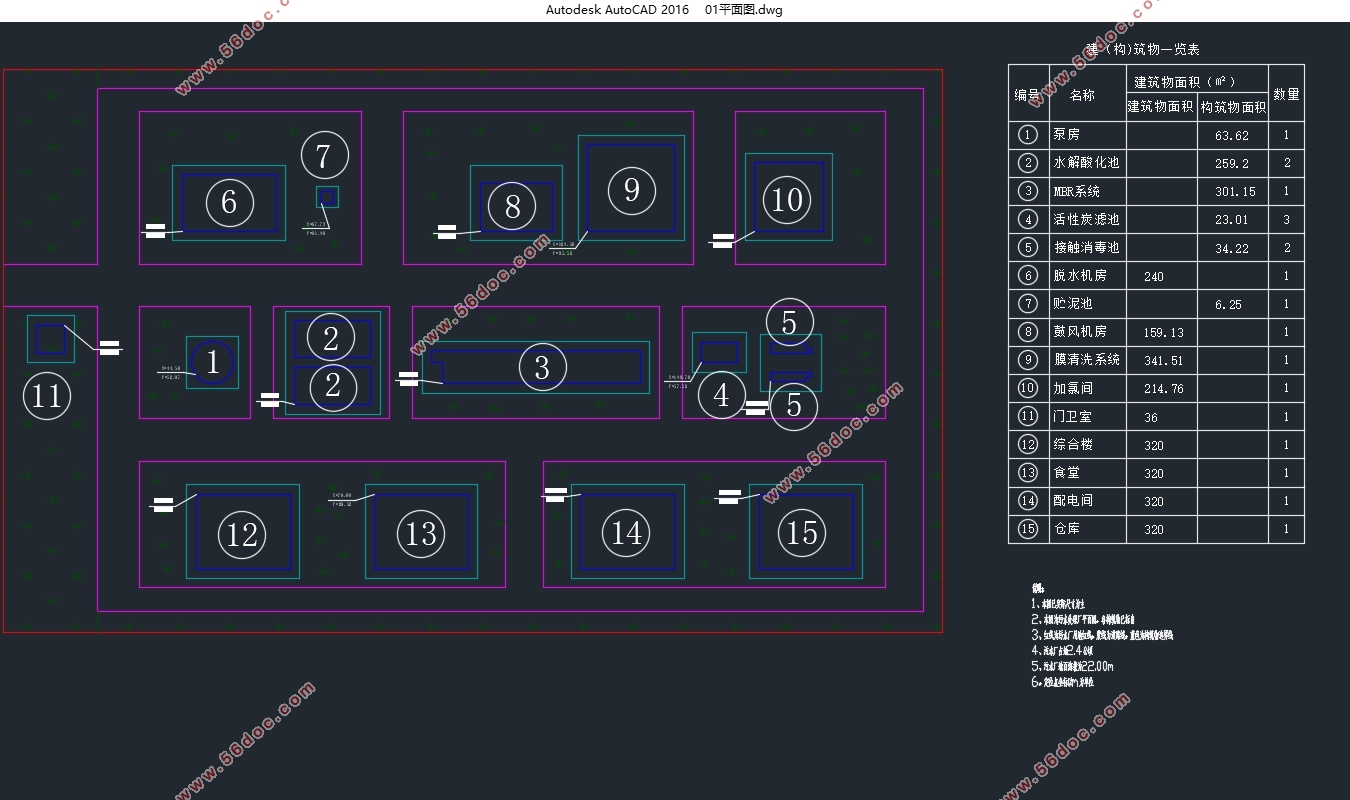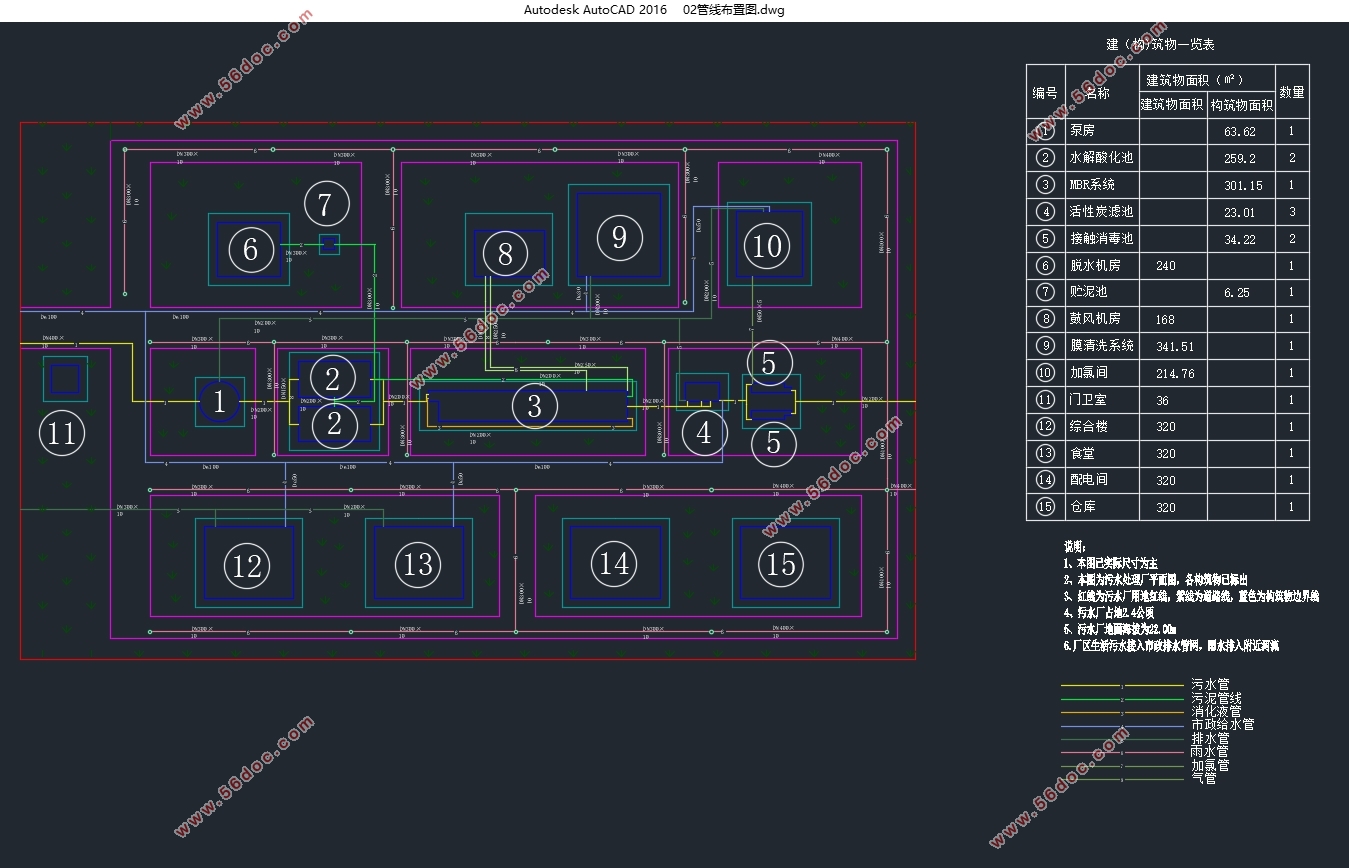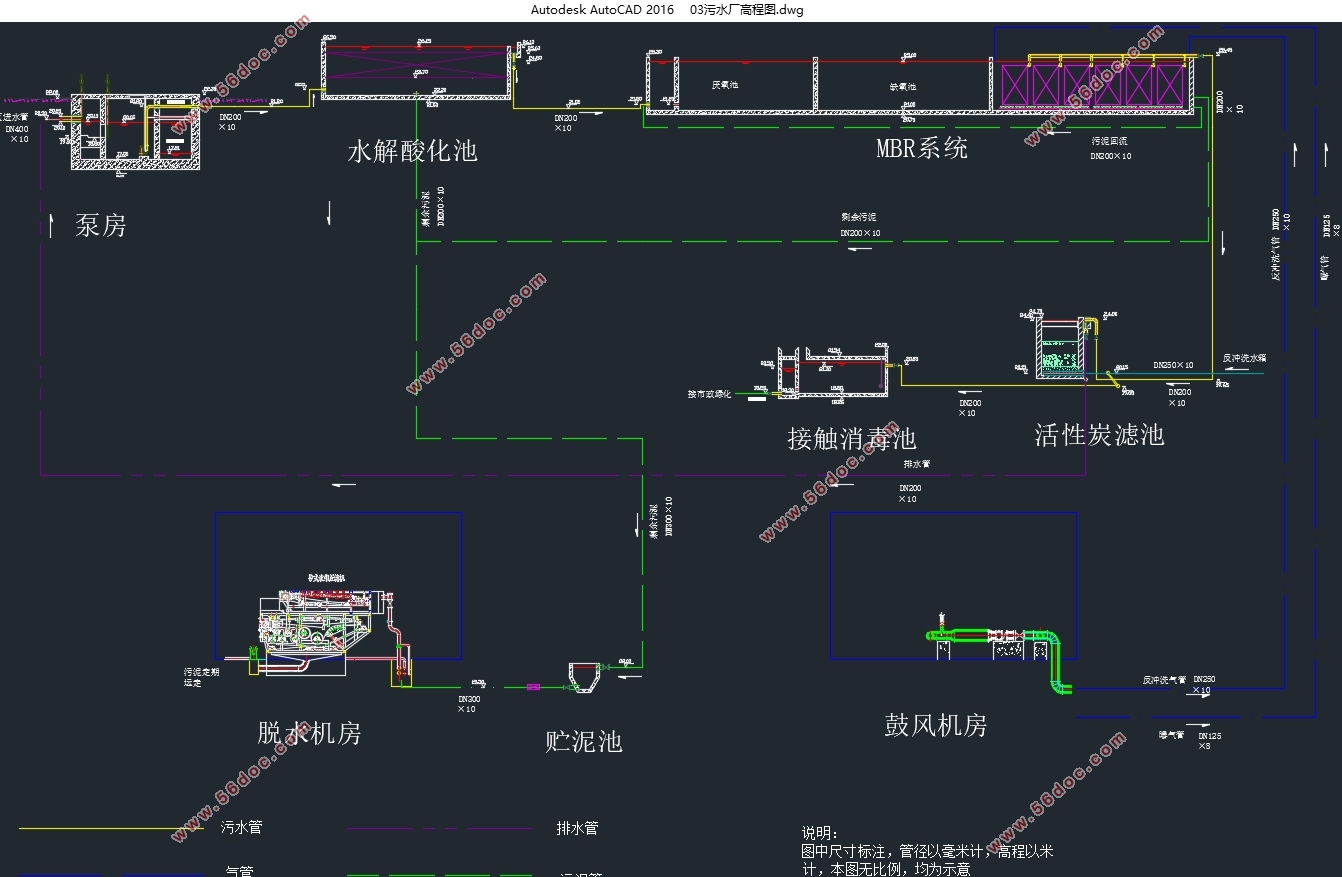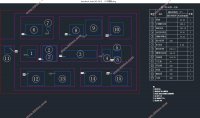生化尾水深度处理工程设计(含CAD图)
来源:56doc.com 资料编号:5D27498 资料等级:★★★★★ %E8%B5%84%E6%96%99%E7%BC%96%E5%8F%B7%EF%BC%9A5D27498
资料以网页介绍的为准,下载后不会有水印.资料仅供学习参考之用. 密 保 惠 帮助
资料介绍
生化尾水深度处理工程设计(含CAD图)(任务书,开题报告,外文翻译,计算说明书21000字,CAD图13张)
摘要
本设计需要根据给定的原始资料及相关要求,进行完整的生化尾水深度处理工程设计。经过经济效益、应用情况、预期成果等方面的考虑,综合污水处理厂的各项进水指标以及最终达到一级A排放标准的要求,选择完整的二级处理系统。工艺流程包括污水的生化处理阶段、物理处理阶段和污泥处理阶段。
污水的生化处理构筑物包括水解酸化池、浸没式MBR,物理处理系统主要指活性炭滤池。活性炭滤池出水进入消毒接触池,进一步处理后达到国际排放一级A标准,最后进入中水回用系统,用于道路浇洒、园林和绿化。设计中水解酸化池污泥和MBR污泥混合进入贮泥池和脱水机房,最后泥渣外运。
关键词:污水处理厂 水解酸化池 MBR 活性炭滤池 污泥处理
Design of biostern water depth treatment
Abstract
This design needs to complete the complete biochemical tailwater depth treatment engineering design according to the given raw materials and related requirements. After economic benefits, the application situation and expected results considerations, integrated water indicators of sewage treatment plants, and ultimately to achieve the requirement of the level of A discharge standards, select complete secondary treatment system. Process flow includes the biochemical treatment stage of sewage, the physical processing stage and the sludge treatment phase.
The biochemical treatment of wastewater includes the hydrolyzed acid pool and the imbued MBR, and the physical processing system mainly refers to the active carbon filter. Activated carbon filter water into the pool disinfection contact, after further treatment to the international emission level A standard, and finally into the water reuse system for pouring the road, garden and green.n the design, the sludge and the MBR sludge are mixed into the storage of the mud and the dehydrated machine room, and finally the sludge can be transported.
Key Words:Sewage treatment plant;Hydrolyzed acid pool;MBR;Active carbon filter;Sludge treatment phase
城市概况
南京位于长江下游中部富庶地区,江苏省西南部。地理坐标为北纬31°14″至32°37″,东经118°22″至119°14″。总面积6597k㎡(不含水域),截至2012年 建成区面积752.83k㎡。南京山水城林融为一体,江河湖泉相得益彰。长江穿城而过,沿江岸线总长近200公里。紫金山风景绝佳,幕府山气势雄伟,秦淮河、金川河萦绕其间,玄武湖、莫愁湖点缀城中,水域面积占总面积的11%以上。全市林木覆盖率26.4%,建成区绿化覆盖率45%,人均公共绿地面积13.7平方米,在全国位居前三甲,是中国四大园林城市之一。南京市跨江而居,北连辽阔的江淮平原,东接富饶的长江三角洲,与镇江市、扬州市、常州市及安徽省滁洲市、马鞍山市、宣州市接壤。由此可见,南京对于水资源的循环利用已迫在眉睫。




目 录
摘要 I
Abstract II
第一章设计条件及设计参数 1
1.1 城市概况 1
1.2.1 地形、地貌 1
1.2.2 工程地质 1
1.2.3 气象资料 1
1.2.4 水文资料 2
1.3工程设计 2
1.3.1 污水量 2
1.3.4 设计目的 2
1.4 设计参数 2
第二章污水处理厂设计计算说明 3
2.1污水处理工艺流程的确定 3
2.1.1工艺的确定 3
2.2 处理率计算 3
2.3 污水厂处理工艺选择 3
2.4 方案确定 5
第三章污水处理构筑物设计计算 6
3.1 水解酸化池 6
3.1.1水解酸化池的选择 6
3.1.2 设计要求 6
3.1.3设计计算 7
3.2 MBR 9
3.2.2设计要求 11
3.2.3 设计计算 11
3.3 活性炭吸附 26
3.3.1 活性炭的选择 26
3.3.2设计要求 27
3.3.3 设计计算 28
3.4 消毒 35
3.4.1 消毒剂的选择 35
3.4.3 设计计算 37
3.5 污泥处理 38
3.5.1 污泥处理的目标 38
3.5.2 污泥产量计算 39
3.5.3 污泥的管道输送 40
3.5.4 设计概述 40
3.5.5 设计计算 41
3.5.6 贮泥池 43
3.5.7 污泥脱水 43
3.6 集水井和提升泵房 44
3.6.1 集水井 44
3.6.2 提升泵房 45
第四章 污水处理厂的总体布置 47
4.1 厂址的选择 47
4.2 平面布置及总平面图 47
4.3 高程布置及流程纵断面图 48
4.3.1 高程布置原则 48
5.3.2 水处理设施高程布置 49
5.3.3 污泥构筑物高程布置 49
第五章 污水处理厂经济概算 50
5.1 土建部分 50
5.1.1 构筑物投资估算 50
5.1.2建筑物投资估算 50
5.1.3 厂区总图部分投资估算 51
5.2 设备部分 52
5.3管道部分 52
5.4 总投资费用 53
5.5 经济效益分析 54
参考资料 55
|









